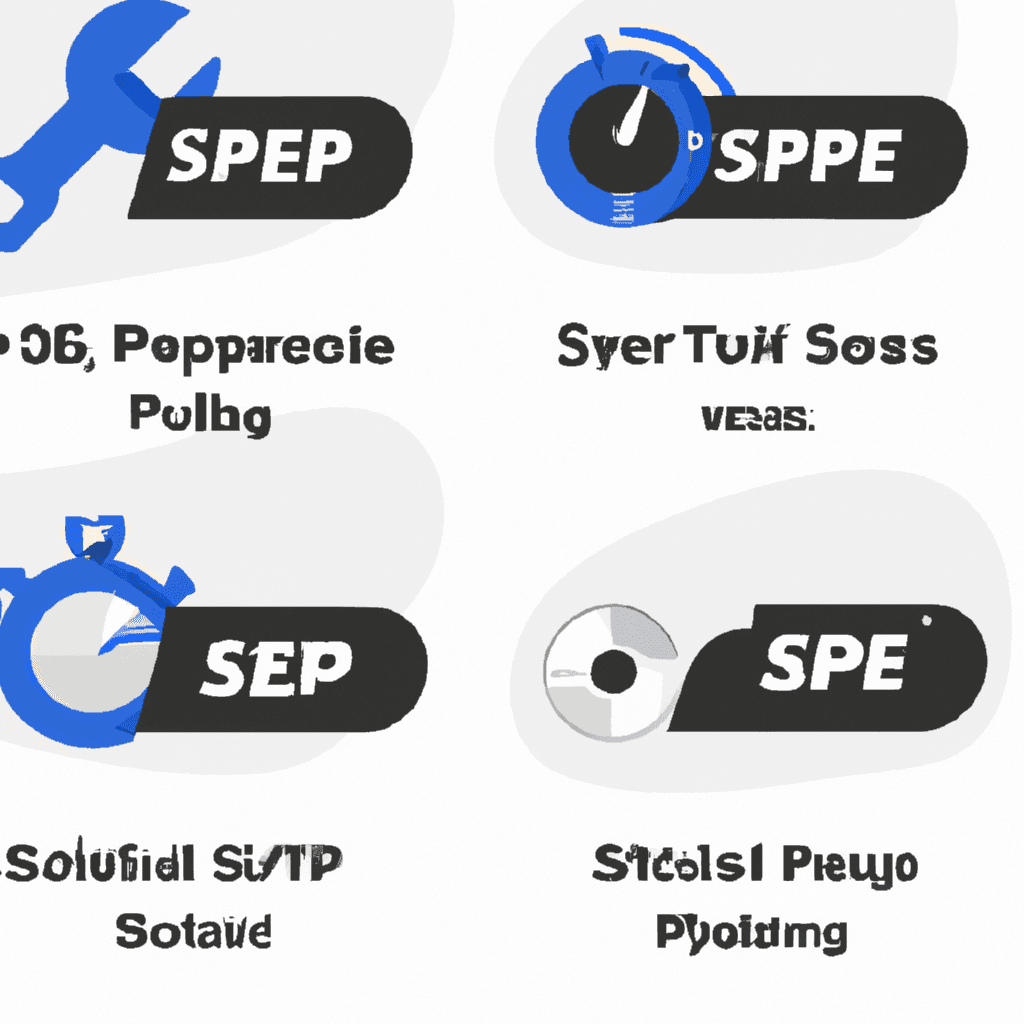How to Achieve Seamless Auto-Scaling for Your E-Commerce Store with AWS and React

Introduction
In the fast-paced world of e-commerce, maintaining optimal website performance and reliability is paramount for attracting and retaining customers. As online traffic volumes can fluctuate dramatically—especially during sales events, holiday seasons, or sudden spikes in popularity—e-commerce store owners must embrace technologies that provide flexibility and scalability. This is where the power of Amazon Web Services (AWS) in conjunction with React comes into play, offering solutions like Elastic Load Balancing (ELB) for auto-scaling that can dynamically adjust your online store's capacity based on real-time demand.
Auto-scaling ensures that your e-commerce platform handles varying traffic volumes efficiently without compromising on speed or user experience. By leveraging AWS and React, developers can implement an architecture that is not only resilient and adaptable but also capable of auto-scaling to meet the demands of the evolving e-commerce landscape. This article aims to explore the capabilities and advantages of deploying auto-scalable e-commerce applications, diving into practical considerations and best practices for ensuring seamless scaling and maximized reliability of your online store.
Understanding Auto-Scaling in E-Commerce
Auto-scaling, in the context of e-commerce, refers to the automated adjustment of resources to handle the changing demand on an online store's infrastructure. This concept is key to managing fluctuating traffic volumes efficiently, ensuring that the website remains responsive at peak times without incurring unnecessary costs during periods of low traffic. Essentially, auto-scaling allows e-commerce platforms to dynamically scale up or down based on real-time usage metrics.
Leveraging auto-scaling techniques can significantly enhance the performance and reliability of e-commerce sites. During sudden spikes in traffic, such as flash sales or Black Friday events, auto-scaling ensures that the website can accommodate the increased load by automatically provisioning additional resources. Similarly, when the traffic decreases, it intelligently scales down to minimize costs without affecting the customer experience. This dynamic adjustment capability is crucial for maintaining a balance between performance, cost-efficiency, and customer satisfaction.
Implementing auto-scaling requires a thorough understanding of the application's architecture and traffic patterns. E-commerce developers and architects must monitor key performance indicators (KPIs) and set appropriate triggers for scaling actions. This often involves configuring cloud services like AWS Elastic Load Balancing (ELB), which plays a pivotal role in distributing incoming traffic across multiple servers and managing the auto-scaling process. By mastering these concepts, businesses can ensure that their online stores are prepared to meet the demands of their customers, regardless of traffic fluctuations.
Benefits of Auto-Scaling for E-Commerce Stores
Auto-scaling brings a suite of advantages to e-commerce stores, fundamentally transforming how they manage traffic surges and operational costs. Among these benefits, improved website performance and enhanced customer satisfaction stand tall, as they directly influence the likelihood of conversions and repeat business.
Improved Website Performance: By automatically adjusting the number of servers based on traffic demand, auto-scaling ensures that websites load quickly and function seamlessly, even during periods of high traffic. This leads to a better overall user experience, as customers are less likely to encounter slowdowns or outages. A responsive and reliable website is crucial for maintaining the competitive edge in today's e-commerce landscape.
Cost Efficiency: One of the most appealing aspects of auto-scaling is its ability to optimize operational costs. Instead of over-provisioning resources to handle peak loads—which can be costly and inefficient—auto-scaling dynamically allocates resources based on actual demand. This way, businesses only pay for what they use, leading to significant savings, especially for stores with variable traffic patterns.
Enhanced Customer Satisfaction: Quick, responsive websites are more likely to satisfy and retain customers. Auto-scaling contributes to a superior shopping experience by minimizing loading times and avoiding downtime, even during traffic spikes. Happy customers are more likely to make repeat purchases and recommend the store to others, driving growth and profitability.
In summary, auto-scaling offers e-commerce businesses the flexibility and efficiency needed to manage their online presence effectively. Implementing auto-scaling not only ensures optimal website performance but also contributes to cost savings and improved customer experience—key factors in achieving long-term success in the e-commerce industry.
Challenges of Implementing Auto-Scaling
While auto-scaling offers numerous benefits to e-commerce stores, it comes with its own set of challenges. Understanding and preparing for these obstacles is crucial for successful implementation. Key challenges include complexity in setup and management, predicting traffic patterns, and maintaining session consistency.
Complexity in Setup and Management: Implementing auto-scaling involves configuring and managing several components, such as load balancers, server instances, and scaling policies. The setup process can be complex, especially for businesses new to cloud services like AWS. Ensuring seamless integration with existing infrastructure and understanding the ins and outs of Elastic Load Balancing (ELB) require time and expertise.
Predicting Traffic Patterns: Effectively configuring auto-scaling rules and triggers depends on accurately predicting traffic patterns. This can be challenging, as traffic can be influenced by various unpredictable factors like marketing campaigns, social media trends, or global events. Miscalculating these patterns may lead to over or under-scaling, affecting performance and costs.
Maintaining Session Consistency: For e-commerce sites, providing a consistent user experience is crucial. However, during the scaling process, ensuring that user sessions remain uninterrupted and data consistency is maintained across scaled instances can be challenging. Session management strategies need to be meticulously planned to avoid disruptions during high-traffic events.
Navigating these challenges requires a strategic approach, involving thorough planning, continuous monitoring, and constant optimization. With the right expertise and tools, e-commerce businesses can leverage auto-scaling to boost their online store's performance and resilience, ensuring a positive customer experience even in the face of fluctuating traffic volumes.
Deploying Auto-Scalable E-Commerce Applications with AWS and React
Deploying auto-scalable e-commerce applications with AWS and React involves integrating several AWS services with a React-based front-end to create a robust, scalable solution. This section outlines the key steps and considerations in building an e-commerce platform that leverages AWS for backend services and React for the user interface.
1. Setting Up AWS Elastic Load Balancing (ELB): The first step is to configure ELB to distribute incoming traffic across multiple instances. ELB helps in balancing the load, ensuring that no single instance is overwhelmed. It's also crucial for the auto-scaling component, as it works in tandem with ELB to adjust the number of instances based on traffic.
2. Implementing Auto-Scaling Groups: AWS Auto Scaling Groups are used to manage the scaling policies and the scaling actions. These groups are configured to automatically add or remove instances according to predefined criteria, such as CPU utilization or request count. Setting the right triggers and thresholds is essential for effective auto-scaling.
3. Developing a React Front-End: The front-end of the e-commerce application is built using React, known for its efficiency and flexibility. React allows for the creation of dynamic, responsive user interfaces that enhance customer experience. Integrating the React front-end with the AWS-powered backend ensures seamless data flow and scalability.
4. Continuous Monitoring and Optimization: Continuous monitoring of the application's performance and user experience is crucial. AWS offers several monitoring tools, such as CloudWatch, to track the application's health and performance. Regular optimization of the scaling policies and React application performance can further enhance efficiency and user satisfaction.
By following these steps and considering the challenges discussed earlier, developers can create a scalable, high-performing e-commerce platform. Leveraging AWS for backend services and React for the front-end not only facilitates efficient scaling but also ensures an engaging and reliable shopping experience for customers.
Best Practices for Seamless Auto-Scaling
For e-commerce businesses aiming to implement auto-scaling effectively, adhering to best practices is essential. These guidelines facilitate the seamless scalability of online stores, ensuring they are equipped to handle traffic volumes efficiently and maintain optimal performance. Here are some best practices for achieving seamless auto-scaling:
1. Thoroughly Understand Your Traffic Patterns: Gaining deep insights into your website's traffic patterns is crucial. Use analytics tools to monitor traffic sources, peak times, and user behavior. This knowledge allows for the precise configuration of scaling policies and triggers, reducing the risk of over or under-scaling.
2. Optimize Application Performance: Before scaling, ensure that your application is optimized for performance. This includes minimizing server response times, optimizing image sizes, and implementing efficient code. A well-optimized application reduces the need for excessive scaling and provides a better user experience.
3. Implement Health Checks and Monitoring: Regularly perform health checks on your infrastructure to identify and resolve issues proactively. Use AWS CloudWatch or similar monitoring tools to track application performance and set alarms for abnormal behavior. This helps in maintaining the stability and reliability of your e-commerce platform.
4. Plan for Scale-Down Scenarios: While much focus is on scaling up during traffic spikes, planning for scale-down scenarios is equally important. Effective scale-down strategies prevent resource wastage and minimize costs without impacting user experience. Implement smooth session handling and data persistence techniques to retain customer data integrity during downscaling.
5. Utilize Managed Services and Serverless Technologies: Where possible, leverage AWS managed services and serverless technologies to simplify infrastructure management and scaling. Services like AWS Lambda and Amazon S3 can automatically scale with demand, reducing the complexity associated with manual scaling.
By following these best practices, e-commerce businesses can harness the full potential of auto-scaling to create scalable, high-performing online stores. Emphasizing planning, optimization, and continuous monitoring can lead to a seamless scaling experience that supports business growth and customer satisfaction.
Conclusion
In an era where e-commerce competition is fierce, leveraging technologies such as AWS and React for deploying auto-scalable applications offers a critical advantage. Through Elastic Load Balancing (ELB) and auto-scaling, businesses can ensure their online stores remain resilient, responsive, and cost-efficient, even during unpredictable traffic surges. While the journey to achieve seamless auto-scaling involves navigating challenges and adhering to best practices, the benefits—ranging from improved website performance to enhanced customer satisfaction—are substantial.
Embracing auto-scaling not only prepares e-commerce platforms to efficiently manage fluctuating traffic but also positions them for sustainable growth. By understanding traffic patterns, optimizing application performance, implementing effective monitoring, and planning for scalability, businesses can offer a superior shopping experience. As technology continues to evolve, staying ahead in the competitive e-commerce landscape requires a strategic approach to scalability and performance. For businesses ready to automate and enhance their blogging as part of their digital marketing strategy, One Click Blog offers a multi-blogging platform with set & forget auto-blogging feature, making it a valuable tool in this endeavor.
Ultimately, deploying auto-scalable e-commerce applications with AWS and React is a powerful strategy for ensuring that online stores can meet the demands of today's digital economy. It paves the way for enhanced reliability, optimal performance, and the agility to adapt to the ever-changing needs of the market and its consumers.

Top 5 Unexpected Ways Musical Improvisation Can Enhance Your Blogging Strategy

Cultivating Variety: 5 Gardening Techniques to Enrich Your Content Strategy

Cultivating Your Digital Garden: 5 Strategies for Content Diversification

5 Ancient Cartography Techniques That Influenced Modern Mapping

Top 5 Strategies for Enhancing Cross-Disciplinary Research Collaboration

Top 5 Ways Cognitive Flexibility Enhances Content Creation

Top 5 Cognitive Behavioral Strategies for Entrepreneurs Seeking Peak Performance

5 Effective Time Management Strategies for Busy Entrepreneurs

The Role of Circadian Rhythms in Content Creation: Maximizing Productivity and Creativity

Maximizing Your Harvest: 5 Surprising Lessons from High-Tech Blogging Platforms

Top 5 Explosive Growth Hacking Case Studies for Newbies

Cracking the Code: Understanding the Costs of WordPress Website Maintenance

Top 7 Proven Strategies to Market Your Multi-Niche Blogs and Maximize SEO Impact

Revolutionizing Content Creation: How Auto-Blogging Platforms are Changing the Game

Unveiling OneClickBlog: Streamline Your Content Creation with Automated Multi-Blogging

How to Generate Passive Income Effortlessly with Automated Blogging

Transform Your Blog: Discover 5 Must-Have AI Tools for SEO-Optimized Content

Unleashing the Power of Auto-Blogging: A Guide for Content Creators

WordPress vs. Shopify: Mastering SEO for Quick Rankings in 2023

Revolutionizing Digital Entrepreneurship: Harnessing Auto-Blogging and Affiliate Marketing

Transitioning from Job Hunt Frustrations to Startup Founding: Is It Your Path Forward?
